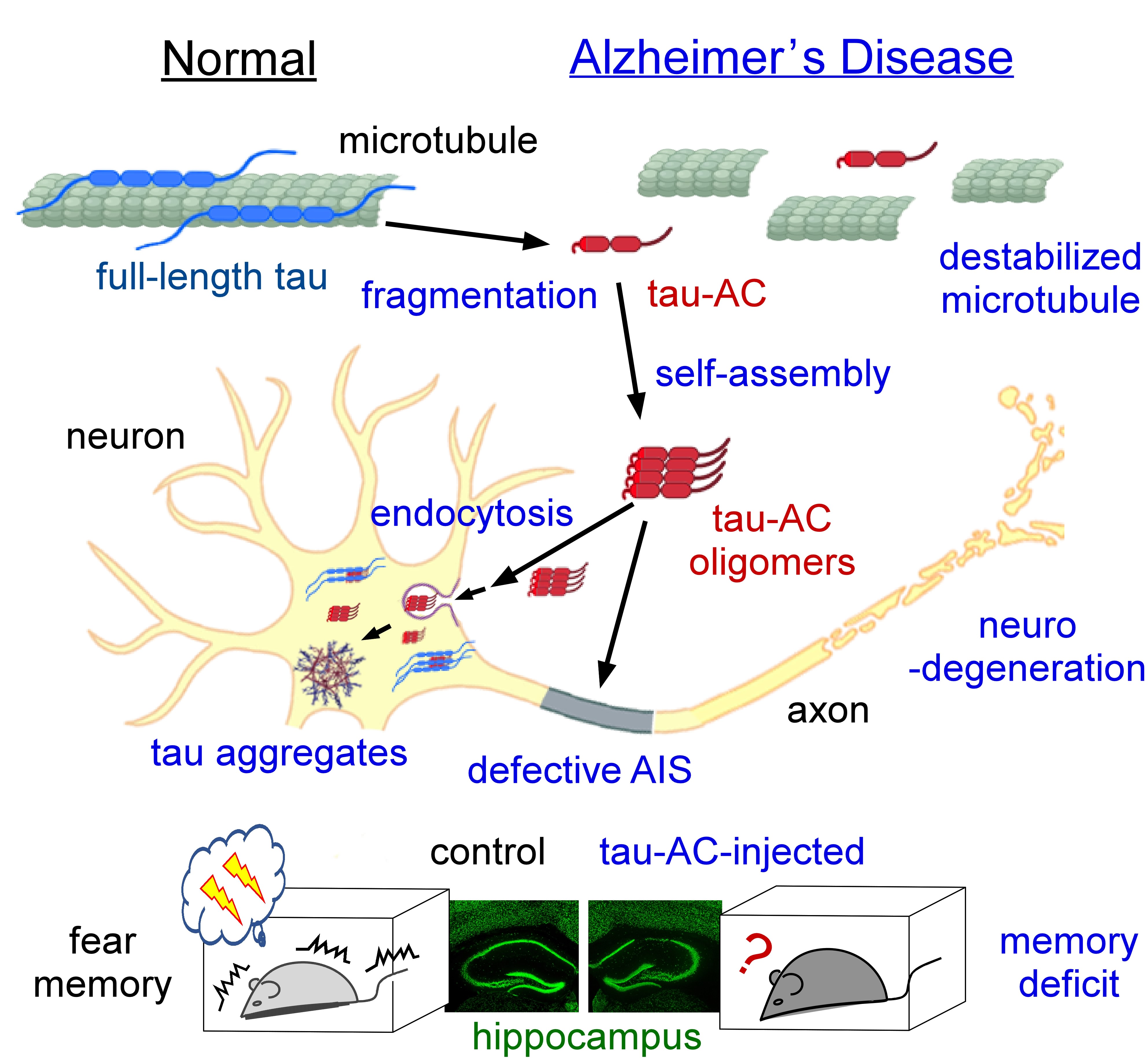In tauopathy conditions, such as Alzheimer's disease (AD), highly soluble and natively unfolded tau polymerizes into an insoluble filament; however, the mechanistic details of this process remain unclear. In the brains of AD patients, only a minor segment of tau forms β-helix-stacked protofilaments, while its flanking regions form disordered fuzzy coats. Here, it is demonstrated that the tau AD nucleation core (tau-AC) sufficiently induced self-aggregation and recruited full-length tau to filaments. Unexpectedly, phospho-mimetic forms of tau-AC (at Ser324 or Ser356) show markedly reduced oligomerization and seeding propensities. Biophysical analysis reveal that the N-terminus of tau-AC facilitates the fibrillization kinetics as a nucleation motif, which becomes sterically shielded through phosphorylation-induced conformational changes in tau-AC. Tau-AC oligomers are efficiently internalized into cells via endocytosis and induced endogenous tau aggregation. In primary hippocampal neurons, tau-AC impaired axon initial segment plasticity upon chronic depolarization and is mislocalized to the somatodendritic compartments. Furthermore, it is observed significantly impaired memory retrieval in mice intrahippocampally injected with tau-AC fibrils, which corresponds to the neuropathological staining and neuronal loss in the brain. These findings identify tau-AC species as a key neuropathological driver in AD, suggesting novel strategies for therapeutic intervention.

https://onlinelibrary.wiley.com/doi/full/10.1002/advs.202302035
 Eco-friendly solution-processed narrowband OLEDs using non-ha...
Eco-friendly solution-processed narrowband OLEDs using non-ha...
 Ultranarrow Mid-infrared Quantum Plasmon Resonance of Self-do...
Ultranarrow Mid-infrared Quantum Plasmon Resonance of Self-do...

















